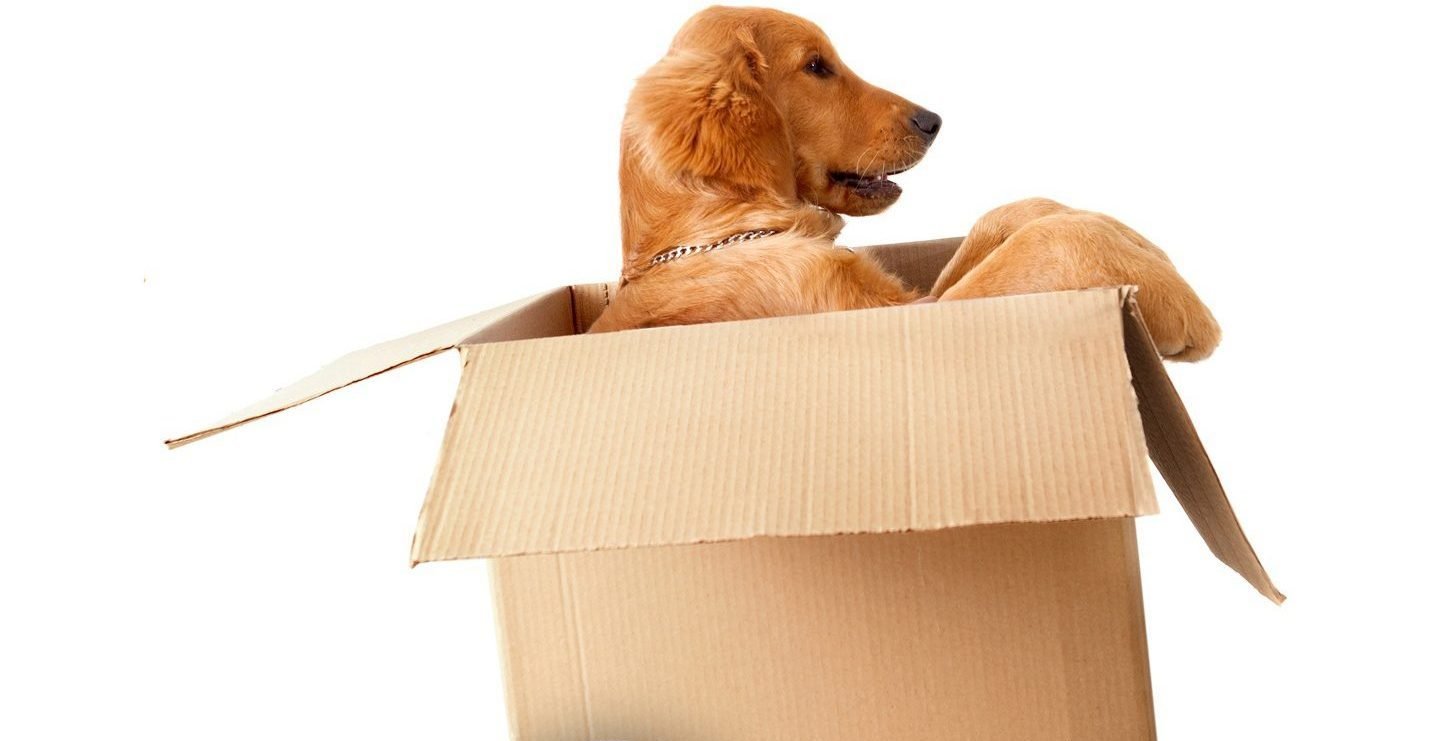Your pup may be totally laid back or a happy, lively guy, but moving can be a stressful event even for a dog. Making the transition easier on your pooch takes planning and that includes putting together his “moving kit.” Below are the essentials for assembling a moving kit for dogs.
Crate
Even if your dog normally rides in your vehicle outside of his crate or a carrier, a move is a time for him to be contained for safety reasons. As in the crate, he stays in at night or when you’re out, he should be able to comfortably stand up and move around inside it.
Blanket or Crate Liner
For comfort, toss your pup’s blanket in the crate. Specially designed crate cushions will make a long ride more tolerable, too. Just keep your eye on him with a new blanket or liner—a young, bored dog will find something to chew on! Instead, offer a favorite chew toy in his crate.
Collar with I.D and Leash
Check to ensure your dog’s collar is fitting comfortably, but not loose enough for escape. I.D., license and rabies vaccine tags should be attached to his collar. His leash should be within reach. If he wears a halter, it should also include his I.D. and tags.
Food, Water, and Bowls
Bring enough food in the kit for the move and first few days of settling in (you don’t want to have to go looking in moving boxes for his food!). Your pup’s appetite may be affected by the stress of the move, so start with small meals. Take a container filled with water or add bottled water to your dog’s kit. Don’t forget his bowls. A travel-size water bowl is a good idea if he uses a large water dish.
Treats and Toys
Most dogs are food-driven. Luring your pooch with a treat is an effective incentive if you want him back in the crate after a break. But also reward him for being a good boy! Stick with familiar treats to avoid stomach upset. Pack a few of your dog’s favorite toys in his moving kit. Make sure they’re toys he can be trusted with, but to be safe, keep your eye on him.
Disposal Bags and Pet Wipes
Include plenty of doggie waste bags in your kit. Wipes are a good idea in case of a bout of diarrhea or just to keep him clean. Throw a roll of paper towels in your vehicle, too, for bigger cleanup.
Vet Medical History and Contact Info
Before you move, ask your veterinarian for a copy of your dog’s medical history record, including all contact information, for his moving kit. If your dog gets sick during your move, you’ll have current medical information for anyone that needs to treat him. This is especially important if you haven’t found his new vet yet.
Medications and Tranquilizers
Don’t forget to put your dog’s medication in the kit. If necessary, ask your vet for refills before you leave. If your pup is a nervous type, he may require sedation to make him more comfortable. Ask your vet to recommend a mild tranquilizer and be sure you understand dosing instructions and possible side effects.
Brought to you by MyMove. Visit MyMove.com for a customizable moving checklist, hand-picked deals, and advice from the pros. Have a less expensive, less stressful move.








